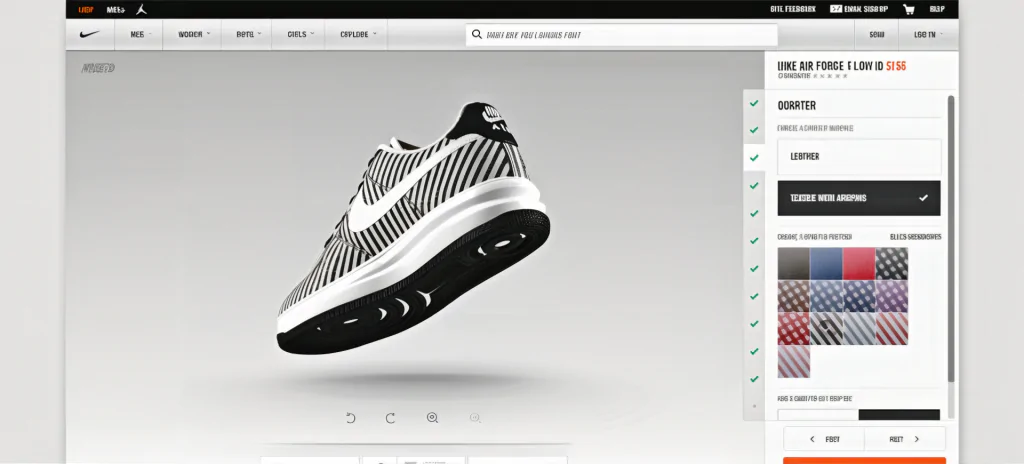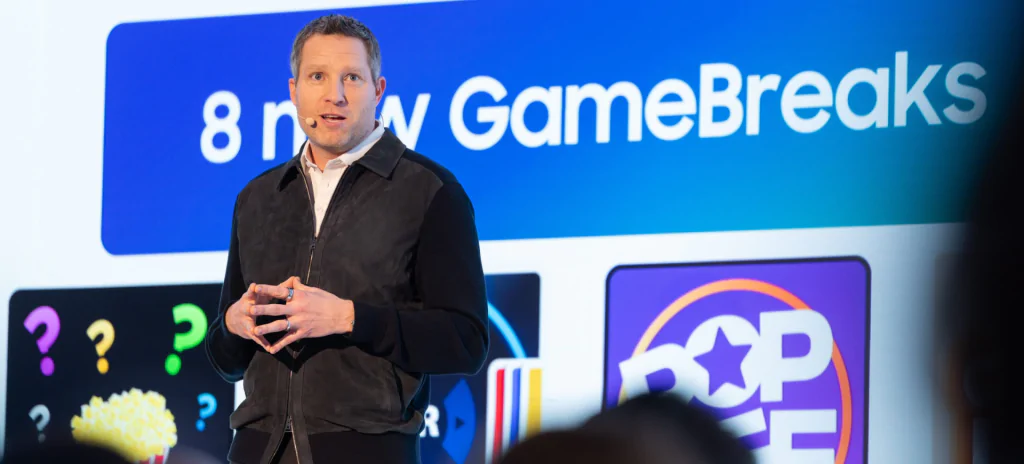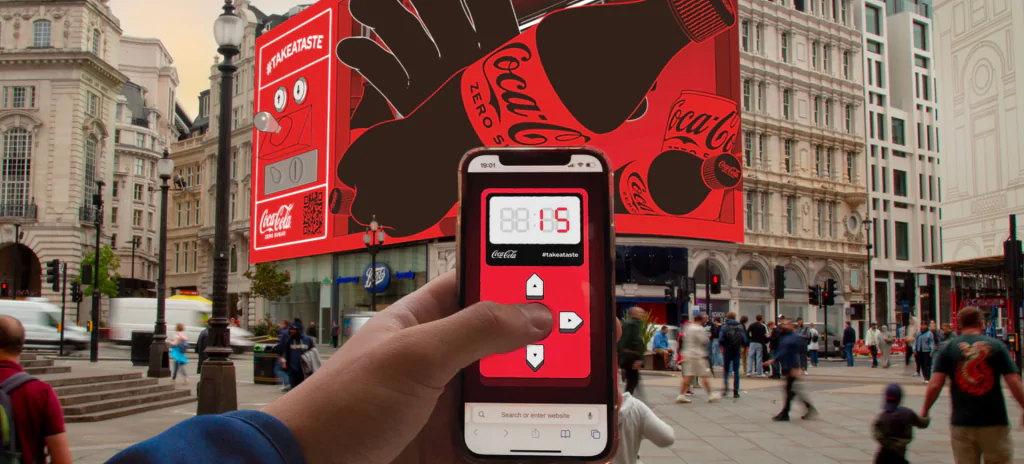Let’s get one thing straight: banner ads are far from obsolete. Even in a world dominated by video content, influencer marketing, and AI-driven search, banners maintain their stronghold as one of the most versatile, measurable, and scalable ad formats in digital marketing.
According to Statista, global digital advertising revenue is expected to reach over $663 billion by 2027, and display ads (which include banners) will continue to play a major role in this growth. This is largely due to emerging tech, creative innovation, and a renewed focus on personalized, high-impact visual content.
In this article, we’ll break down the hottest banner trends of 2025, the innovations changing how audiences interact with ads, and real tips to help you pick the right format for your next campaign.
4 Banner Trends in Advertising in 2025
AI and Machine Learning
If you’ve been in digital marketing for more than a minute, you know that banner ads used to be all about MANUAL work: designing static creatives, setting up A/B tests, guessing at what might resonate, and waiting days… or sometimes weeks, for performance data to roll in.
Fast forward to 2025, and AI in ads has taken over much of that grunt work. It’s now the engine behind some of the best-performing banner campaigns in the game. Microsoft Ads reports that campaigns using AI-driven optimization saw up to 33% higher CTR compared to those without it. Some platforms report even stronger lifts (up to 47% higher CTR and 55% lower cost-per-order) when creative generation and delivery are automated with AI.
AI optimizes at scale. And platforms like AdCreative.ai, Smartly.io, or Google’s Performance Max generate hundreds of banner variations in seconds, adjusting headlines, visuals, and even button colors based on user response patterns.
Furthermore, AI assists with predictive targeting. Campaigns using AI-driven targeting see up to 70% higher conversion rates than those with manual segmentation. This makes AI banners especially powerful in mid- and lower-funnel campaigns where maximizing return on ad spend matters most.
Quick tip: AI banners work best when backed by solid data. They shine with existing audience insights and previous campaign learnings, but you may note that they can underperform in cold outreach without context.
Dynamic Banners
Dynamic banners are breathing new life into static ads by making them smarter, more timely, and tailored to the moment.
A study from eMarketer found that dynamic ads can boost engagement by 60% and more than double the click-through rate compared to static banners. Retargeted dynamic ads alone can deliver CTR gains of 10x over generic ones and lift conversions by 70%, especially in e-commerce, travel, or local events.
Here are some examples:
- E-commerce: Ads with items you just browsed, reminders about your abandoned cart, or alerts when prices drop.
- Travel: Real-time deals on flights or hotels, customized to your location and timing.
- Entertainment: Ads for shows or events happening near you, with up-to-date ticket availability.
Retargeting banners (those handy reminders based on your previous activity) are also part of this dynamic banner area. They work great for reconnecting with people through offers that actually matter to them.
This format is a must-have for large-scale campaigns with wide product ranges or geo-specific needs. However, dynamic creatives need quality data feeds and frequent creative refreshes to avoid ad fatigue.
Visual Storytelling in Ads
Visual storytelling turns your ad into a real experience. In 2025, brands are using banner space to tell a story, to show the journey behind a product, spark emotion, and build a real connection. You only have a few seconds to connect with your audience, and a well-crafted visual story often works better than any punchy headline ever could.
Why does it matter?
Story-based ads lead to 22x higher brand recall and 60% more purchase intent. Whether it’s a skincare time-lapse, a road trip in 3 panels, or a before-and-after sequence, micro-stories pull users in emotionally.
Even static banners can convey narrative through design flow, icon progression, or visual metaphor. Storytelling banners work best in top- and mid-funnel campaigns where your goal is to earn attention or build affinity, not just drive clicks.
Quick tip: Use storytelling when it supports your message. In performance campaigns with limited attention windows, keep narrative elements simple and CTA-focused.
Personalized Banners
In 2025, personalization is what people expect (like a few years ago). Audiences are used to seeing content that speaks exactly to them. Most generic ads are scrolled past without a second thought. But when a banner feels like it “gets” you, it can really stop the scroll.
Compared to standard display ads, personalized CTAs convert 42% more visitors, and brands that excel at personalization get 10–15% higher revenue from marketing efforts. These banners adapt based on past purchases, device type, session behavior, and even time of day.
These banners also adapt to the moment:
- A user who just browsed your pricing page gets a banner with a limited-time discount and a clear CTA to “Claim Offer.”
- A returning user is greeted with a loyalty-based message: “Welcome back — your free spins are waiting.”
- A morning user gets “Rise and shine! Grab 20% off before noon” notification, while night owls see: “Still up? Get 15% off till sunrise.”
And it really works. According to Accenture, 91% of consumers are more likely to shop with brands that give them relevant offers and recommendations. Just remember, personalization must feel thoughtful. Overdoing it or making assumptions can break trust. And without proper consent and privacy-safe data handling, your personalization efforts can fall flat.
Standout Features and Smart Banner Innovations
Interactive and Gamified Banners
Interactive banners have already become one of the most exciting ways to boost engagement, and let’s be honest, they’re a lot more fun than just looking at a static image.
These banners invite users to take action:
- Spin a digital wheel to win a discount
- Swipe left/right to reveal product options
- Complete a 3-second quiz to get custom recommendations
- Tap a bouncing icon to trigger animation
- Choose between two product features in a side-by-side comparison
Why does this work so well? Because people are naturally curious. Instead of pushing a message, users get to experience it. And engagement metrics support this. Celtra reports that interactive banners generate up to 3x longer engagement time and 4x higher CTR.
Gamified banners go one step further. They borrow ideas from games (like challenges, progress bars, or instant rewards) to make users feel like they’re playing instead of being sold to. And brands like Nike, Sephora, and Samsung keep pushing the envelope, experimenting with micro-games to promote new launches, and some of those campaigns went viral:
- Nike launched Interactive Shoe Customizer, a banner-based sneaker game, where users could pick colors/features to “customize” a Nike sneaker and then compete in a short animated race, all in-banner. The interactive ad achieved higher-than-average engagement.

- Sephora Beauty Insider Points Quest. The game element of the quest gave the promise of rewards: the ads highlighted that users could earn points, badges, and perks through their engagement. Sephora saw a surge in Beauty Insider sign-ups and higher engagement from members. The gamified ads led to more users joining and actively participating in the loyalty program.
- And Samsung took things up a notch with GameBreaks, interactive mini-game ads on Connected TV, turning TV ad breaks into 30-second trivia games that saw 89% of viewers preferring them over traditional commercials.

In 2025, these banners are built using fast, responsive tech like HTML5, Canvas, and lightweight frameworks that ensure they load smoothly across all devices. And with 5G widely available now, slow-loading ads are pretty much a thing of the past.
Quick tip: Interactive banners come with creative overhead and may not suit time-sensitive or simple message campaigns. If your goal is just to drive quick action, interactive ads might complicate the journey.
AR Banners
In 2025, Augmented Reality (AR) has become a core part of how brands engage with people. From virtual try-ons in retail to immersive training in the workplace, AR is showing up across industries. This also marks the rise of video banner ads that combine immersive movement with utility, helping users engage with products before clicking through.
The global AR market is projected to hit $62 billion by 2029, and AR banners are riding that wave. Campaigns using AR see average engagement times of 75 seconds (yes, really), and conversion rates 94% higher than standard ads. That’s a huge payoff for mid-funnel and consideration stages, especially in retail, automotive, or real estate.
So what does that mean to banners? AR is being used to create immersive, product-rich ad experiences that bridge the gap between screens and real-world interaction.

People with smartphones could interact with the screens’ content in real time, in a first for a DOOH campaign. (Image: Coca-Cola)
Quick tip: AR isn’t for everyone. It requires development time, device compatibility, and user willingness to engage. Use AR banners strategically when the immersive value is worth the scroll-stop.
New Banner Formats Reshaping 2025 Marketing
Scrolling banners
Scrolling banners move with the users as they scroll a webpage. They stay in view without getting in the way, which is especially useful on mobile, where attention spans are short. With sticky scroll functionality, you can build a story step-by-step that unfolds as users scroll. Some brands have reported 3x higher engagement with scrolling banners versus traditional mobile units.
What makes them effective?
- They stay visible without taking over the screen
- You can break down your CTA into easy-to-follow steps
- They flow naturally with how people browse.
3D banners
3D banners, on the other hand, bring the product to life. Users can rotate a sneaker, zoom into fabric texture, or explore interior design layouts. This format is a godsend for e-commerce, luxury goods, real estate, and automotive brands.
Key statistics to note:
- Interactive 3D banners show a 312% increase in engagement over traditional static display ads
- Time spent with 3D ad formats is up to 5x higher than flat creatives
However, both types of banners require more production resources and design attention. Use them when you need to impress, for example: product launches, luxury goods, or high-ticket conversions.
Choosing the Right Format for Your Campaign
It is worth noticing that great advertising comes from relevance. Choosing the right banner format is about aligning creative with campaign goals, audience context, and what’s technically possible.
To help you choose the best fit, we’ve reworked the comparison into a practical table. You’ll find a quick overview of which banner format works best for what goal, along with cost, complexity, and risk level. Let’s break it down:
| Banner Format | Best Use Case | Cost Efficiency | Creative Complexity | Performance Risk |
| AI-Powered Banners | Scaling & optimizing large campaigns | Very High | Low-medium (templates + data) | Medium (needs clean data + oversight) |
| Dynamic Banners | Product feeds, real-time content updates | Very High | Medium (feed + templates) | Medium (data feed quality matters) |
| Personalized Banners | Reaching known users | Medium-High | High (multiple versions) | Medium (depends on data accuracy) |
| Storytelling Banners | Emotional branding and premium positioning | Medium-High | High (script, visual, and copy) | Medium (relies on narrative impact) |
| Interactive/ Gamified | Lead gen, contests, user engagement + memorability | Low | Very High (dev + UX/game design) | High (if gameplay isn’t clear/fun) |
| AR (Augmented Reality) | Virtual try-ons, product demos | Low | Very High (AR + 3D assets) | High (tech barriers, user drop-off) |
| 3D Banners | Product showcase | Low | Very High (3D model + dev) | Medium (heavy load, not always used) |
| Scrolling Banners | Showing multiple products/messages | Medium-High | Medium (HTML5 multi-panel) | Low (fallback view still works fine) |
Ultimately, the choice between static and interactive formats depends on your campaign’s goal, the user’s stage in the funnel, and the kind of experience you want to create.
- If your priority is reach, speed, and budget control, like for top-of-funnel brand awareness or broad retargeting, then static or dynamic banners deliver the best return.
- But if you’re aiming for deeper engagement or higher conversion rates, interactive formats start to shine. Gamified banners can deliver 4x higher CTR, and AR banners can boost conversions by a whopping 94% over traditional display.
But even the most logical pairing is still a hypothesis until it’s tested. Audience behavior can vary by vertical, device, and even time of day. That’s why creative testing is a must. It allows you to:
- Identify what truly resonates with your audience
- Reduce wasted spend
- Continuously improve performance across campaigns
Conclusion
As we can see, banner ads are about how you show up, speak to your audience, and earn their attention. The message is clear: banners work best when tailored, tested, and tuned into the user’s journey.
And the truth is, there’s no universal formula. Some campaigns thrive on subtlety and emotion, others on speed and data. The real win lies in blending strategy with creativity and constantly asking the right questions: “Am I showing the right message to the right person at the right time? Am I using the tools available to stay relevant and visible? Am I delivering ads people actually want to see?”
So, if you need an efficient strategy and banners that cut through the noise, feel tailor-made, and actually get people to engage, mr.Booster is here to help. Let’s make it happen.